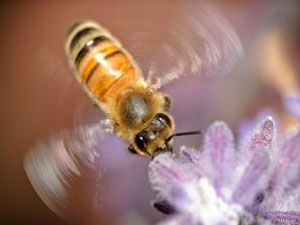Nature导读,2009年4月16日出版
时间:2009-04-20 阅读: 我要评论:
[自然要览]
(选自英国Nature杂志,2009年4月16日出版)
封面故事: 生成GNRs的新方法
Longitudinal unzipping of carbon nanotubes to form graphene nanoribbons / Narrow graphene nanoribbons from carbon nanotubes
“石墨烯纳米带”(GNRs)是被拉长的石墨带,厚度为一个原子。它们在未来电子器件中将扮演一个主要角色。石墨烯是一种导体,但GNRs随着其宽度的不同却表现出不同的电子性能。这种可调节性可能使它们比碳纳米管在某些应用中更有吸引力。GNRs的大批量生产是下一个挑战。人们曾经尝试了各种不同方法,其中包括平版印刷法和蒸气沉积法。现在,两个小组报告了从碳纳米管生成GNRs的一种新思想的不同形式。来自赖斯大学的一个小组,通过用高锰酸将多壁碳纳米管撕开形成氧化石墨烯、再将后者还原以恢复其导电性的办法生成了100纳米宽的纳米带。该过程可从单壁纳米管来生成较薄的GNRs,虽然还需要做更多的工作来将缠绕在一起的纳米带解开。来自斯坦福大学的一个小组,用等离子蚀刻方法来将被部分封闭在一种聚合物中的纳米管割开,从而生成GNRs。这样生成的GNRs边缘平滑(这对其电子性能有利),并且具有一个宽度为10-20纳米的较窄的分布。(Letters pp. 872, 877: News & Views)
粒子天文学领域的进展(The astronomy of matter)
The dawn of the particle astronomy era in ultra-high-energy cosmic rays
天文学家已经占据了电磁波谱上几乎每个可供利用的位置:射电天文学、微波天文学、红外天文学、可见光天文学、紫外天文学、X-射线天文学和伽马射线天文学当中的每个都能让我们从一个不同的视角来观察宇宙。现在,一个新的观测窗口正在打开,这个窗口即粒子天文学。这一新兴领域利用新一代探测器来分析宇宙射线(来自宇宙空间的带电粒子流)。天文学家们特别感兴趣的是那些能量在1019电子伏特以上的粒子,因为有可能产生或加速这种粒子的物理过程处在我们当前知识的极限上。在一篇综述文章(第847页)中,Pablo Bauleo 和 Julio Rodríguez Martino对过去15年超高能宇宙射线物理学领域的进展进行了讨论,并对粒子天文学时代将会获得的发现进行了预测。(Review Article p. 847)
解决蛋白-肽结合特异性问题的一种方法(Protein family values)
Design of protein-interaction specificity gives selective bZIP-binding peptides
设计与天然蛋白目标相结合的肽、蛋白或小分子,是获得新试剂和新疗法的一个很有希望的途径。然而,解决相互作用特异性(interaction specificity)问题(即设计出的分子对预定目标的选择性要优于对相关替代分子的选择性)却是困难的。Gevorg Grigoryan等人建立了一个计算框架,来设计蛋白-肽相互作用,将其作为避免这一问题的一个步骤。他们利用这种方法来识别与人bZIP转录因子相结合的肽,而且尽管bZIP蛋白在序列和结构方面有很强的相似性,所选用的肽却是选择性地与其中一个家族的蛋白结合(如与onco-蛋白c-Jun、c-Fos和c-Maf结合),而不是与其他19个bZIP家族的蛋白结合。(Article p. 859)
恒星演化模型需做进一步修正(Supernovae out of the blue)
A massive hypergiant star as the progenitor of the supernova SN 2005gl
在需要验证关于大质量恒星演化后期的模型时,超新星SN 1987A便显得很重要:它是其前身星已知处在爆炸前超新星所在精确位置的惟一的一个超新星。它过去是一个蓝色的超巨星,但这并不是当时关于恒星演化的模型所预测到的结果。现在,研究人员已经确切识别出了名为SN 2005gl的另一个超新星的一个前身星。来自哈勃档案资料的图片(拍摄于1997年)证实,非常明亮的点辐射源NGC266_LBV 1处在SN 2005gl的精确位置。在哈勃望远镜2007年的观测结果中,这个天体完全消失了。所以,SN 2005gl的前身星是一颗明亮的蓝色变星,根据标准恒星演化理论,该变星本不应在那个状态爆炸。因此,需要对恒星演化模型做进一步修正。(Letter p. 865)
电子自旋共振的新形式——弹道式自旋共振(Spin resonance goes ballistic)
Ballistic spin resonance
由高频磁场或电场产生的电子自旋共振,在医学和量子信息等广泛领域都有应用。本期Nature报告了该现象的一个新变种:弹道式自旋共振。这种形式的自旋共振不需要外驱动场。实际上,它是当在具有一个二维半导体结构的微米尺度通道中来回弹跳的电子经历自旋共振而穿过一个有效磁场时产生的,而该磁场则是由于它们的自旋-轨道相互作用产生的。这一有效磁场因在通道壁上的不断反射而发生振荡,振荡的典型频率(在大约20–100 GHz范围内)对于现代自旋共振应用具有吸引力。(Letter p. 868; News & Views)
上个间冰期的海平面(Interglacial sea levels)
Rapid sea-level rise and reef back-stepping at the close of the last interglacial highstand
未来海平面迅速上升的可能性也许是来自全球变暖的最大威胁。但最近格陵兰和南极洲的冰层消失是否是这种上升的第一个指示却是一个难以回答的问题,因为仪器记录的持续时间是有限的。来自墨西哥Xcaret主题公园中一个曝露程度极高的化石礁,为上个间冰期该地区礁石地形、侵蚀表面和海平面变化的发展情况提供了一幅细致的画面。研究人员将精确铀序列年代测定及地层分析方法结合起来,同时与其他地方的珊瑚年龄进行对比,发现在距今大约121,000年前,海平面上升了2-3米,这个结果与快要到上个间冰期末的时候曾经有一段时间冰层不稳定的事实是一致的。根据这一证据,在不远的将来,冰层持续快速消失和海平面持续上升是有可能的。(Letter p. 881)
驱动和维持多巴胺能神经元末端分化的充要条件(Directing dopaminergic differentiation)
Gene regulatory logic of dopamine neuron differentiation
产生作为神经传输物质多巴胺的神经元控制一系列脑功能,包括运动控制、认知、动机和快感。前体细胞在这些功能所涉及的数量巨大的发育线路中是怎样选择其中一个线路——即选择多巴胺能这一命运的一直不清楚。现在,Nuria Flames 和Oliver Hobert报告说,调控蛋白AST-1是线虫C. elegans体内驱动和维持多巴胺能神经元的末端分化的必要和充分条件。由于该蛋白及其末端分化功能在小鼠身上被惊人地保留了下来,所以这些结果对于多巴胺相关疾病如帕金森氏症的干细胞替换疗法有直接意义。(Letter p. 885; News & Views)
“人互补调控因子H”与fHbp所形成复合物的结构被确定(A mimic in meningitis)
Neisseria meningitidis recruits factor H using protein mimicry of host carbohydrates
人类病原体脑膜炎奈瑟球菌是细菌性脑膜炎和败血病性休克的一个主要病因,它拥有一种表面蛋白,即“H-因子结合蛋白”(fHbp),后者与“宿主互补调控因子H”结合,从而干涉免疫反应。现在,“人互补调控因子H”与fHbp之间所形成的复合物的结构已被确定。它显示,细菌蛋白通过模仿糖胺聚糖来结合H-因子,这种聚糖自然出现在宿主内皮细胞上,在那里它们与H-因子结合来防止血管树(vascular tree)的互补调控损伤。这项工作对于抵抗脑膜炎球菌疾病的疫苗及疗法的开发具有重要意义。(Letter p. 890)
小鼠Fto基因与肥胖症的联系(Protection from obesity)
Inactivation of the Fto gene protects from obesity
在几项基因组范围内的关联性研究中,人类FTO基因的变异已被与肥胖症的相关特征关联了起来。现在,研究人员报告了Fto(小鼠身上的相应基因)与肥胖症之间在功能上的一种关联性。缺失Fto的小鼠,有出生后生长迟缓现象,同时有一个瘦的表现型,能量消耗高,脂肪积累少。这表明,Fto/FTO通过对能量消耗的控制来参与体内平衡的调控。(Letter p. 894)
IFNα对干细胞的激发(Stem cell activation by IFNα)
IFN activates dormant haematopoietic stem cells in vivo
造血干细胞(HSCs)以休眠状态存在,直到在受伤时才被唤醒,从而发生增殖,以快速修复损伤的组织。这篇论文表明,当用干扰素阿尔法(IFNα)处理小鼠时,为响应这种处理,HSCs进入一个活动细胞周期,增加STAT1 和 PKB/Akt的磷酸化,抑制IFNα目标基因,同时向上调节干细胞抗原-1(Sca-1)。虽然HSCs中IFNα通道的慢性激发会损害这一功能,但急性IFNα处理却能在活体中促进休眠HSCs的增殖。这些数据也许可帮助澄清迄今尚未得到解释的IFNα对于白血病细胞的临床效应,同时也提出了利用I-型干扰素来定向处理癌症干细胞的新应用的可能性。(Letter p. 904)
禽流感病毒PA亚单元N-端的晶体结构(Influenza virus RNA polymerase structure)
Crystal structure of an avian influenza polymerase PAN reveals an endonuclease active site / The cap-snatching endonuclease of influenza virus polymerase resides in the PA subunit
“流感病毒RNA-依赖性RNA聚合酶”含有三个亚单元(PA、PB1和 PB2),指导病毒RNA在被感染细胞的细胞核内的复制和转录。现在,两个小组报告了禽流感病毒PA亚单元的N-端的晶体结构。结构比较和突变分析表明,该PA亚单元包含一个内切点,这是以前被怀疑在PB1亚单元内的一个活性点。该PA核酸内切酶活性点在所有流感病毒类型中都具有高度保守性,这使得它成为新的抗流感药物的一个很有希望的潜在目标。(Letters pp. 909, 914)
胸腺嘧啶的另一条生物合成路径(Byways to thymidine)
An unusual mechanism of thymidylate biosynthesis in organisms containing the thyX gene
胸腺嘧啶(四种普遍存在的DNA碱基之一)是由胸苷酸合成酶合成的,这种酶催化“2´-脱氧尿苷-5´-单磷酸盐”的尿嘧啶部分的甲基化。传统胸苷酸合成酶,包括人体的这种酶,利用一个活性点氨基酸侧链来在该反应的这一阶段激发基质。几年前,研究人员在若干种生物(其中包括几种人类病原体)中识别出了另一种形式的胸苷酸生物合成,这种形式涉及一种依赖于黄素的胸苷酸合成酶,后者是thyX基因的产物。现在,Koenhn等人对合成胸腺嘧啶的这一替代途径进行了定性,并且发现它并不需要一种酶类亲核试剂;相反,实际情况似乎是,一个氢负离子从被还原的黄素辅因子被直接转移到尿嘧啶环上。因为几种人类病原体依靠这一生物合成通道来进行DNA生物合成,所以我们有可能开发出以这种酶为目标的具有高度选择性的新型抗生素。(Letter p. 919; News & Views)
----------------------
NEWS AND VIEWS
----------------------
Obesity: Be cool, lose weight pp839-840
To lose weight, would you rather diet, exercise or subject yourself to
cool temperatures? The last choice is not such an odd one, as adult
humans have brown fat tissue that burns calories in response to cold.
Stephen R. Farmer
doi:10.1038/458839a
http://www.nature.com/nature/journal/v458/n7240/full/458839a.html
Biochemistry: Anchors away pp840-841
Nature often adopts several approaches to crack the same problem. The
finding that the mechanism of a crucial enzyme in certain disease-
causing bacteria differs from that in mammals offers scope for drug discovery.
Maria Paola Costi and Stefania Ferrari
doi:10.1038/458840a
http://www.nature.com/nature/journal/v458/n7240/full/458840a.html
Solid-state physics: Bouncing spins pp841-843
The conventional approach to flipping electron spins in a semiconductor
requires an external alternating field. It seems that the same job can
be accomplished without external excitation of any kind.
Lieven M. K. Vandersypen
doi:10.1038/458841a
http://www.nature.com/nature/journal/v458/n7240/full/458841a.html
Neuroscience: A bar code for differentiation pp843-844
Regulating neuronal development can be complicated. But genetic
control of neurotransmitter expression [mdash] as exemplified by
differentiation of dopamine-secreting neurons [mdash] turns out to
be relatively straightforward.
Nicholas C. Spitzer
doi:10.1038/458843a
http://www.nature.com/nature/journal/v458/n7240/full/458843a.html
Imaging: Nanoscale MRI pp844-845
Magnetic resonance imaging offers rich three-dimensional pictures, but
with limited resolution. Imaging at the nanometre scale has now become
possible using highly sensitive force-detection techniques.
P. C. Hammel
doi:10.1038/458844a
http://www.nature.com/nature/journal/v458/n7240/full/458844a.html
Materials science: Nanotubes unzipped pp845-846
Nanotubes are single sheets of graphite rolled up into a cylinder. But
no one thought that nanotubes could be cut along their axis and
flattened out to make such sheets. Until now.
Mauricio Terrones
doi:10.1038/458845a
http://www.nature.com/nature/journal/v458/n7240/full/458845a.html
----------------------
REVIEW
----------------------
The dawn of the particle astronomy era in ultra-high-energy cosmic
rays pp847-851
Cosmic rays are charged particles arriving at Earth from space. Those
at the highest energies are particularly interesting because the
physical processes that could create or accelerate them are at the limit
of our present knowledge. The Pierre Auger Observatory is the largest
cosmic-ray detector on Earth, and as such is beginning to resolve past
observational disagreements regarding the origin and propagation of these particles.
Pablo M. Bauleo and Julio Rodriguez Martino
doi:10.1038/nature07948
Abstract: http://www.nature.com/nature/journal/v458/n7240/abs/nature07948.html
Article: http://www.nature.com/nature/journal/v458/n7240/full/nature07948.html
----------------------
ARTICLES
----------------------
Kinetochore geometry defined by cohesion within the centromere pp852-858
In this study, Watanabe and colleagues investigate the contribution
of kinetochore geometry as a determinant for bipolar versus monopolar
attachment. They find that cohesion at the core centromere induces a
monopolar attachment seen in meiosis I; in contrast, cohesion at the
peri-centromeric region promotes bipolar attachment in mitosis.
Takeshi Sakuno, Kenji Tada and Yoshinori Watanabe
doi:10.1038/nature07876
Abstract: http://www.nature.com/nature/journal/v458/n7240/abs/nature07876.html
Article: http://www.nature.com/nature/journal/v458/n7240/full/nature07876.html
Design of protein-interaction specificity gives selective bZIP-binding
peptides pp859-864
In this manuscript, the authors develop a computational framework to
design protein peptide interactions, and they use the method to identify
peptides that bind to human bZIP transcription factors. Despite that
fact that bZIP proteins share strong sequence and structural similarities,
the authors were able to find peptides that selectively bound to one
family, but not the 19 other families.
Gevorg Grigoryan, Aaron W. Reinke and Amy E. Keating
doi:10.1038/nature07885
Abstract: http://www.nature.com/nature/journal/v458/n7240/abs/nature07885.html
Article: http://www.nature.com/nature/journal/v458/n7240/full/nature07885.html
----------------------
LETTERS
----------------------
A massive hypergiant star as the progenitor of the supernova SN 2005gl pp865-867
A key missing piece in the puzzle of supernovae is the difficulty of
identifying and studying progenitor stars; in only a single case
(SN 1987A) has a star been detected at the supernova location before
the explosion. The proposed progenitor of supernova SN 2005gl has now
been confirmed by Gal-Yam and Leonard as indeed the progenitor of that
supernova; standard stellar evolution predicts that this very massive
luminous blue variable should not have exploded in that state.
A. Gal-Yam and D. C. Leonard
doi:10.1038/nature07934
Abstract: http://www.nature.com/nature/journal/v458/n7240/abs/nature07934.html
Article: http://www.nature.com/nature/journal/v458/n7240/full/nature07934.html
Ballistic spin resonance pp868-871
Electron spin resonance produced by high-frequency magnetic or electric
fields has wide applications. The authors report a type of electron spin
resonance that does not require external driving fields; electrons
bouncing back and forth in micrometre-scale channels of a semiconductor
structure undergo spin resonance through an effective magnetic field that
oscillates owing to the repeated wall reflections, with typical
frequencies (~20-100 GHz) that are attractive for modern spin resonance
applications.
S. M. Frolov et al.
doi:10.1038/nature07873
Abstract: http://www.nature.com/nature/journal/v458/n7240/abs/nature07873.html
Article: http://www.nature.com/nature/journal/v458/n7240/full/nature07873.html
Longitudinal unzipping of carbon nanotubes to form graphene nanoribbons pp872-876
Graphene nanoribbons have important electronic properties [mdash] as their
width increases they change from semiconductor to semi-metal [mdash] but
it has been difficult to make large quantities. To do so, Tour et al.
simply longitudinally unzip multiwalled carbon nanotubes with permanganate
in acid to form graphene oxide, which is then reduced to restore electronic
conductivity. The ribbons are about 100 nm wide (thinner ones tend to 'mat'),
and the authors use them to make field-effect transistors.
Dmitry V. Kosynkin et al.
doi:10.1038/nature07872
Abstract: http://www.nature.com/nature/journal/v458/n7240/abs/nature07872.html
Article: http://www.nature.com/nature/journal/v458/n7240/full/nature07872.html
Narrow graphene nanoribbons from carbon nanotubes pp877-880
Unlike graphene itself, or carbon nanotubes, very narrow nanoribbons of
graphene are completely semiconducting. Dai and colleagues reliably produce
bulk quantities of sub-10 nm graphene nanoribbons by partial encapsulation
of carbon nanotubes in a polymer. The exposed part of the nanotube can be
cut by plasma etching, so that the nanotube unzips when the polymer is
removed, leaving a very thin strip of graphene.
Liying Jiao et al.
doi:10.1038/nature07919
Abstract: http://www.nature.com/nature/journal/v458/n7240/abs/nature07919.html
Article: http://www.nature.com/nature/journal/v458/n7240/full/nature07919.html
Rapid sea-level rise and reef back-stepping at the close of the last
interglacial highstand pp881-884
Knowing the rate at which the sea-level rose 4-6 m (highstand) during the
last interglacial period could help us assess whether such rapid ice loss
could lead to future catastrophic sea-level rise. Blanchon and co-authors
date a fossil coral reef from the Yucatan peninsula, Mexico, to present a
complete highstand reef-crest sequence and its U-series chronology. They
find that the reef back-stepped to 6 m, which they infer occurred rapidly,
and was triggered by a 2-3 m jump in sea level during a time of ice-sheet
instability.
Paul Blanchon, Anton Eisenhauer, Jan Fietzke and Volker Liebetrau
doi:10.1038/nature07933
Abstract: http://www.nature.com/nature/journal/v458/n7240/abs/nature07933.html
Article: http://www.nature.com/nature/journal/v458/n7240/full/nature07933.html
Gene regulatory logic of dopamine neuron differentiation pp885-889
The authors reveal that the regulatory protein AST-1 is necessary and
sufficient to drive and maintain the terminal differentiation of
dopaminergic neurons in C. elegans. Because the protein and its terminal
differentiation function are strikingly conserved in mice, the results
have direct implications for stem-cell replacement strategies in numerous
dopamine-related disorders, such as Parkinson's disease.
Nuria Flames and Oliver Hobert
doi:10.1038/nature07929
Abstract: http://www.nature.com/nature/journal/v458/n7240/abs/nature07929.html
Article: http://www.nature.com/nature/journal/v458/n7240/full/nature07929.html
Neisseria meningitidis recruits factor H using protein mimicry of host
carbohydrates pp890-893
Neisseria meningitidis possesses a surface protein called fHbp that binds
to the complement regulator factor H, thereby interfering with the host
immune response. Now the structure of N. meningitidis fHbp bound to factor
H is presented, revealing the molecular interactions between these two molecules.
Muriel C. Schneider et al.
doi:10.1038/nature07769
Abstract: http://www.nature.com/nature/journal/v458/n7240/abs/nature07769.html
Article: http://www.nature.com/nature/journal/v458/n7240/full/nature07769.html
Inactivation of the Fto gene protects from obesity pp894-898
This study shows that mice lacking the Fto gene do not grow properly after
birth, and have less adipose tissue and lean body mass. This is due to
increased energy expenditure and systemic sympathetic activation, even
though these mice move less and eat lots.
Julia Fischer et al.
doi:10.1038/nature07848
Abstract: http://www.nature.com/nature/journal/v458/n7240/abs/nature07848.html
Article: http://www.nature.com/nature/journal/v458/n7240/full/nature07848.html
Identification of a dendritic cell receptor that couples sensing of necrosis
to immunity
This study shows that dendritic cells use the C-type lectin CLEC9A to sense
necrotic cell debris and to mediate cross-presentation of dead-cell-associated antigens.
David Sancho et al.
doi:10.1038/nature07750
Abstract: http://www.nature.com/nature/journal/vaop/ncurrent/full/nature07750.html
Article: http://www.nature.com/nature/journal/vaop/ncurrent/full/nature07750.html
IFN[agr] activates dormant haematopoietic stem cells in vivo pp904-908
This paper shows that in response to treatment of mice with interferon-[alpha]
(IFN[alpha]), haematopoietic stem cells
exit the dormant stage and enter an active cell cycle, The data may help to
clarify the clinical effects of IFNa on leukaemic cells, and raise the
possibility for new applications of type I interferons to target cancer stem cells.
Marieke A. G. Essers et al.
doi:10.1038/nature07815
Abstract: http://www.nature.com/nature/journal/v458/n7240/abs/nature07815.html
Article: http://www.nature.com/nature/journal/v458/n7240/full/nature07815.html
Crystal structure of an avian influenza polymerase PAN reveals an endonuclease
active site pp909-913
This paper reports the crystal structure of the amino terminus of the PA
subunit of the influenza RNA polymerase, and provides evidence that it has
endonuclease activity.
Puwei Yuan et al.
doi:10.1038/nature07720
Abstract: http://www.nature.com/nature/journal/v458/n7240/abs/nature07720.html
Article: http://www.nature.com/nature/journal/v458/n7240/full/nature07720.html
The cap-snatching endonuclease of influenza virus polymerase resides in the
PA subunit pp914-918
The amino terminal domain of influenza virus polymerase PA subunit is shown
to harbour the endonuclease activity required for the cap-snatching mechanism
of viral mRNA synthesis.
Alexandre Dias et al.
doi:10.1038/nature07745
Abstract: http://www.nature.com/nature/journal/v458/n7240/abs/nature07745.html
Article: http://www.nature.com/nature/journal/v458/n7240/full/nature07745.html
An unusual mechanism of thymidylate biosynthesis in organisms containing the
thyX gene pp919-923
This paper reports an example of thymidylate biosynthesis that occurs without
an enzymatic nucleophile, and is found in organisms containing the thyX gene
(encoding a flavin-dependent thymidylate synthase). Because several human
pathogens depend on this biosynthetic pathway for DNA biosynthesis, it may
be possible to develop new, highly selective antibiotics that target this enzyme.
Eric M. Koehn et al.
doi:10.1038/nature07973
Abstract: http://www.nature.com/nature/journal/v458/n7240/abs/nature07973.html
Article: http://www.nature.com/nature/journal/v458/n7240/full/nature07973.html
----------------------
TECHNOLOGY FEATURES
----------------------
Functional Neuroscience: How to get ahead in imaging pp925-928
Advances in magnetic resonance imaging are helping scientists learn more about
the structure and function of the brain. Nathan Blow looks at how far the
technology has developed and where it could go.
Nathan Blow
doi:10.1038/458925a
http://www.nature.com/nature/journal/v458/n7240/full/458925a.html
Functional Neuroscience: Changing the colour of MRI p926
Nathan Blow
doi:10.1038/458926a
http://www.nature.com/nature/journal/v458/n7240/full/458926a.html
Functional Neuroscience: Table of suppliers pp929-930
doi:10.1038/458929a
http://www.nature.com/nature/journal/v458/n7240/full/458929a.html
----------------------
FUTURES
----------------------
EvoSoap p938
Truly personal hygiene.
Elizabeth Farnsworth, Aaron M. Ellison and Nicholas J. Gotelli
doi:10.1038/458938a
http://www.nature.com/nature/journal/v458/n7240/full/458938a.html
(选自英国Nature杂志,2009年4月16日出版)
封面故事: 生成GNRs的新方法
Longitudinal unzipping of carbon nanotubes to form graphene nanoribbons / Narrow graphene nanoribbons from carbon nanotubes
“石墨烯纳米带”(GNRs)是被拉长的石墨带,厚度为一个原子。它们在未来电子器件中将扮演一个主要角色。石墨烯是一种导体,但GNRs随着其宽度的不同却表现出不同的电子性能。这种可调节性可能使它们比碳纳米管在某些应用中更有吸引力。GNRs的大批量生产是下一个挑战。人们曾经尝试了各种不同方法,其中包括平版印刷法和蒸气沉积法。现在,两个小组报告了从碳纳米管生成GNRs的一种新思想的不同形式。来自赖斯大学的一个小组,通过用高锰酸将多壁碳纳米管撕开形成氧化石墨烯、再将后者还原以恢复其导电性的办法生成了100纳米宽的纳米带。该过程可从单壁纳米管来生成较薄的GNRs,虽然还需要做更多的工作来将缠绕在一起的纳米带解开。来自斯坦福大学的一个小组,用等离子蚀刻方法来将被部分封闭在一种聚合物中的纳米管割开,从而生成GNRs。这样生成的GNRs边缘平滑(这对其电子性能有利),并且具有一个宽度为10-20纳米的较窄的分布。(Letters pp. 872, 877: News & Views)
粒子天文学领域的进展(The astronomy of matter)
The dawn of the particle astronomy era in ultra-high-energy cosmic rays
天文学家已经占据了电磁波谱上几乎每个可供利用的位置:射电天文学、微波天文学、红外天文学、可见光天文学、紫外天文学、X-射线天文学和伽马射线天文学当中的每个都能让我们从一个不同的视角来观察宇宙。现在,一个新的观测窗口正在打开,这个窗口即粒子天文学。这一新兴领域利用新一代探测器来分析宇宙射线(来自宇宙空间的带电粒子流)。天文学家们特别感兴趣的是那些能量在1019电子伏特以上的粒子,因为有可能产生或加速这种粒子的物理过程处在我们当前知识的极限上。在一篇综述文章(第847页)中,Pablo Bauleo 和 Julio Rodríguez Martino对过去15年超高能宇宙射线物理学领域的进展进行了讨论,并对粒子天文学时代将会获得的发现进行了预测。(Review Article p. 847)
解决蛋白-肽结合特异性问题的一种方法(Protein family values)
Design of protein-interaction specificity gives selective bZIP-binding peptides
设计与天然蛋白目标相结合的肽、蛋白或小分子,是获得新试剂和新疗法的一个很有希望的途径。然而,解决相互作用特异性(interaction specificity)问题(即设计出的分子对预定目标的选择性要优于对相关替代分子的选择性)却是困难的。Gevorg Grigoryan等人建立了一个计算框架,来设计蛋白-肽相互作用,将其作为避免这一问题的一个步骤。他们利用这种方法来识别与人bZIP转录因子相结合的肽,而且尽管bZIP蛋白在序列和结构方面有很强的相似性,所选用的肽却是选择性地与其中一个家族的蛋白结合(如与onco-蛋白c-Jun、c-Fos和c-Maf结合),而不是与其他19个bZIP家族的蛋白结合。(Article p. 859)
恒星演化模型需做进一步修正(Supernovae out of the blue)
A massive hypergiant star as the progenitor of the supernova SN 2005gl
在需要验证关于大质量恒星演化后期的模型时,超新星SN 1987A便显得很重要:它是其前身星已知处在爆炸前超新星所在精确位置的惟一的一个超新星。它过去是一个蓝色的超巨星,但这并不是当时关于恒星演化的模型所预测到的结果。现在,研究人员已经确切识别出了名为SN 2005gl的另一个超新星的一个前身星。来自哈勃档案资料的图片(拍摄于1997年)证实,非常明亮的点辐射源NGC266_LBV 1处在SN 2005gl的精确位置。在哈勃望远镜2007年的观测结果中,这个天体完全消失了。所以,SN 2005gl的前身星是一颗明亮的蓝色变星,根据标准恒星演化理论,该变星本不应在那个状态爆炸。因此,需要对恒星演化模型做进一步修正。(Letter p. 865)
电子自旋共振的新形式——弹道式自旋共振(Spin resonance goes ballistic)
Ballistic spin resonance
由高频磁场或电场产生的电子自旋共振,在医学和量子信息等广泛领域都有应用。本期Nature报告了该现象的一个新变种:弹道式自旋共振。这种形式的自旋共振不需要外驱动场。实际上,它是当在具有一个二维半导体结构的微米尺度通道中来回弹跳的电子经历自旋共振而穿过一个有效磁场时产生的,而该磁场则是由于它们的自旋-轨道相互作用产生的。这一有效磁场因在通道壁上的不断反射而发生振荡,振荡的典型频率(在大约20–100 GHz范围内)对于现代自旋共振应用具有吸引力。(Letter p. 868; News & Views)
上个间冰期的海平面(Interglacial sea levels)
Rapid sea-level rise and reef back-stepping at the close of the last interglacial highstand
未来海平面迅速上升的可能性也许是来自全球变暖的最大威胁。但最近格陵兰和南极洲的冰层消失是否是这种上升的第一个指示却是一个难以回答的问题,因为仪器记录的持续时间是有限的。来自墨西哥Xcaret主题公园中一个曝露程度极高的化石礁,为上个间冰期该地区礁石地形、侵蚀表面和海平面变化的发展情况提供了一幅细致的画面。研究人员将精确铀序列年代测定及地层分析方法结合起来,同时与其他地方的珊瑚年龄进行对比,发现在距今大约121,000年前,海平面上升了2-3米,这个结果与快要到上个间冰期末的时候曾经有一段时间冰层不稳定的事实是一致的。根据这一证据,在不远的将来,冰层持续快速消失和海平面持续上升是有可能的。(Letter p. 881)
驱动和维持多巴胺能神经元末端分化的充要条件(Directing dopaminergic differentiation)
Gene regulatory logic of dopamine neuron differentiation
产生作为神经传输物质多巴胺的神经元控制一系列脑功能,包括运动控制、认知、动机和快感。前体细胞在这些功能所涉及的数量巨大的发育线路中是怎样选择其中一个线路——即选择多巴胺能这一命运的一直不清楚。现在,Nuria Flames 和Oliver Hobert报告说,调控蛋白AST-1是线虫C. elegans体内驱动和维持多巴胺能神经元的末端分化的必要和充分条件。由于该蛋白及其末端分化功能在小鼠身上被惊人地保留了下来,所以这些结果对于多巴胺相关疾病如帕金森氏症的干细胞替换疗法有直接意义。(Letter p. 885; News & Views)
“人互补调控因子H”与fHbp所形成复合物的结构被确定(A mimic in meningitis)
Neisseria meningitidis recruits factor H using protein mimicry of host carbohydrates
人类病原体脑膜炎奈瑟球菌是细菌性脑膜炎和败血病性休克的一个主要病因,它拥有一种表面蛋白,即“H-因子结合蛋白”(fHbp),后者与“宿主互补调控因子H”结合,从而干涉免疫反应。现在,“人互补调控因子H”与fHbp之间所形成的复合物的结构已被确定。它显示,细菌蛋白通过模仿糖胺聚糖来结合H-因子,这种聚糖自然出现在宿主内皮细胞上,在那里它们与H-因子结合来防止血管树(vascular tree)的互补调控损伤。这项工作对于抵抗脑膜炎球菌疾病的疫苗及疗法的开发具有重要意义。(Letter p. 890)
小鼠Fto基因与肥胖症的联系(Protection from obesity)
Inactivation of the Fto gene protects from obesity
在几项基因组范围内的关联性研究中,人类FTO基因的变异已被与肥胖症的相关特征关联了起来。现在,研究人员报告了Fto(小鼠身上的相应基因)与肥胖症之间在功能上的一种关联性。缺失Fto的小鼠,有出生后生长迟缓现象,同时有一个瘦的表现型,能量消耗高,脂肪积累少。这表明,Fto/FTO通过对能量消耗的控制来参与体内平衡的调控。(Letter p. 894)
IFNα对干细胞的激发(Stem cell activation by IFNα)
IFN activates dormant haematopoietic stem cells in vivo
造血干细胞(HSCs)以休眠状态存在,直到在受伤时才被唤醒,从而发生增殖,以快速修复损伤的组织。这篇论文表明,当用干扰素阿尔法(IFNα)处理小鼠时,为响应这种处理,HSCs进入一个活动细胞周期,增加STAT1 和 PKB/Akt的磷酸化,抑制IFNα目标基因,同时向上调节干细胞抗原-1(Sca-1)。虽然HSCs中IFNα通道的慢性激发会损害这一功能,但急性IFNα处理却能在活体中促进休眠HSCs的增殖。这些数据也许可帮助澄清迄今尚未得到解释的IFNα对于白血病细胞的临床效应,同时也提出了利用I-型干扰素来定向处理癌症干细胞的新应用的可能性。(Letter p. 904)
禽流感病毒PA亚单元N-端的晶体结构(Influenza virus RNA polymerase structure)
Crystal structure of an avian influenza polymerase PAN reveals an endonuclease active site / The cap-snatching endonuclease of influenza virus polymerase resides in the PA subunit
“流感病毒RNA-依赖性RNA聚合酶”含有三个亚单元(PA、PB1和 PB2),指导病毒RNA在被感染细胞的细胞核内的复制和转录。现在,两个小组报告了禽流感病毒PA亚单元的N-端的晶体结构。结构比较和突变分析表明,该PA亚单元包含一个内切点,这是以前被怀疑在PB1亚单元内的一个活性点。该PA核酸内切酶活性点在所有流感病毒类型中都具有高度保守性,这使得它成为新的抗流感药物的一个很有希望的潜在目标。(Letters pp. 909, 914)
胸腺嘧啶的另一条生物合成路径(Byways to thymidine)
An unusual mechanism of thymidylate biosynthesis in organisms containing the thyX gene
胸腺嘧啶(四种普遍存在的DNA碱基之一)是由胸苷酸合成酶合成的,这种酶催化“2´-脱氧尿苷-5´-单磷酸盐”的尿嘧啶部分的甲基化。传统胸苷酸合成酶,包括人体的这种酶,利用一个活性点氨基酸侧链来在该反应的这一阶段激发基质。几年前,研究人员在若干种生物(其中包括几种人类病原体)中识别出了另一种形式的胸苷酸生物合成,这种形式涉及一种依赖于黄素的胸苷酸合成酶,后者是thyX基因的产物。现在,Koenhn等人对合成胸腺嘧啶的这一替代途径进行了定性,并且发现它并不需要一种酶类亲核试剂;相反,实际情况似乎是,一个氢负离子从被还原的黄素辅因子被直接转移到尿嘧啶环上。因为几种人类病原体依靠这一生物合成通道来进行DNA生物合成,所以我们有可能开发出以这种酶为目标的具有高度选择性的新型抗生素。(Letter p. 919; News & Views)
----------------------
NEWS AND VIEWS
----------------------
Obesity: Be cool, lose weight pp839-840
To lose weight, would you rather diet, exercise or subject yourself to
cool temperatures? The last choice is not such an odd one, as adult
humans have brown fat tissue that burns calories in response to cold.
Stephen R. Farmer
doi:10.1038/458839a
http://www.nature.com/nature/journal/v458/n7240/full/458839a.html
Biochemistry: Anchors away pp840-841
Nature often adopts several approaches to crack the same problem. The
finding that the mechanism of a crucial enzyme in certain disease-
causing bacteria differs from that in mammals offers scope for drug discovery.
Maria Paola Costi and Stefania Ferrari
doi:10.1038/458840a
http://www.nature.com/nature/journal/v458/n7240/full/458840a.html
Solid-state physics: Bouncing spins pp841-843
The conventional approach to flipping electron spins in a semiconductor
requires an external alternating field. It seems that the same job can
be accomplished without external excitation of any kind.
Lieven M. K. Vandersypen
doi:10.1038/458841a
http://www.nature.com/nature/journal/v458/n7240/full/458841a.html
Neuroscience: A bar code for differentiation pp843-844
Regulating neuronal development can be complicated. But genetic
control of neurotransmitter expression [mdash] as exemplified by
differentiation of dopamine-secreting neurons [mdash] turns out to
be relatively straightforward.
Nicholas C. Spitzer
doi:10.1038/458843a
http://www.nature.com/nature/journal/v458/n7240/full/458843a.html
Imaging: Nanoscale MRI pp844-845
Magnetic resonance imaging offers rich three-dimensional pictures, but
with limited resolution. Imaging at the nanometre scale has now become
possible using highly sensitive force-detection techniques.
P. C. Hammel
doi:10.1038/458844a
http://www.nature.com/nature/journal/v458/n7240/full/458844a.html
Materials science: Nanotubes unzipped pp845-846
Nanotubes are single sheets of graphite rolled up into a cylinder. But
no one thought that nanotubes could be cut along their axis and
flattened out to make such sheets. Until now.
Mauricio Terrones
doi:10.1038/458845a
http://www.nature.com/nature/journal/v458/n7240/full/458845a.html
----------------------
REVIEW
----------------------
The dawn of the particle astronomy era in ultra-high-energy cosmic
rays pp847-851
Cosmic rays are charged particles arriving at Earth from space. Those
at the highest energies are particularly interesting because the
physical processes that could create or accelerate them are at the limit
of our present knowledge. The Pierre Auger Observatory is the largest
cosmic-ray detector on Earth, and as such is beginning to resolve past
observational disagreements regarding the origin and propagation of these particles.
Pablo M. Bauleo and Julio Rodriguez Martino
doi:10.1038/nature07948
Abstract: http://www.nature.com/nature/journal/v458/n7240/abs/nature07948.html
Article: http://www.nature.com/nature/journal/v458/n7240/full/nature07948.html
----------------------
ARTICLES
----------------------
Kinetochore geometry defined by cohesion within the centromere pp852-858
In this study, Watanabe and colleagues investigate the contribution
of kinetochore geometry as a determinant for bipolar versus monopolar
attachment. They find that cohesion at the core centromere induces a
monopolar attachment seen in meiosis I; in contrast, cohesion at the
peri-centromeric region promotes bipolar attachment in mitosis.
Takeshi Sakuno, Kenji Tada and Yoshinori Watanabe
doi:10.1038/nature07876
Abstract: http://www.nature.com/nature/journal/v458/n7240/abs/nature07876.html
Article: http://www.nature.com/nature/journal/v458/n7240/full/nature07876.html
Design of protein-interaction specificity gives selective bZIP-binding
peptides pp859-864
In this manuscript, the authors develop a computational framework to
design protein peptide interactions, and they use the method to identify
peptides that bind to human bZIP transcription factors. Despite that
fact that bZIP proteins share strong sequence and structural similarities,
the authors were able to find peptides that selectively bound to one
family, but not the 19 other families.
Gevorg Grigoryan, Aaron W. Reinke and Amy E. Keating
doi:10.1038/nature07885
Abstract: http://www.nature.com/nature/journal/v458/n7240/abs/nature07885.html
Article: http://www.nature.com/nature/journal/v458/n7240/full/nature07885.html
----------------------
LETTERS
----------------------
A massive hypergiant star as the progenitor of the supernova SN 2005gl pp865-867
A key missing piece in the puzzle of supernovae is the difficulty of
identifying and studying progenitor stars; in only a single case
(SN 1987A) has a star been detected at the supernova location before
the explosion. The proposed progenitor of supernova SN 2005gl has now
been confirmed by Gal-Yam and Leonard as indeed the progenitor of that
supernova; standard stellar evolution predicts that this very massive
luminous blue variable should not have exploded in that state.
A. Gal-Yam and D. C. Leonard
doi:10.1038/nature07934
Abstract: http://www.nature.com/nature/journal/v458/n7240/abs/nature07934.html
Article: http://www.nature.com/nature/journal/v458/n7240/full/nature07934.html
Ballistic spin resonance pp868-871
Electron spin resonance produced by high-frequency magnetic or electric
fields has wide applications. The authors report a type of electron spin
resonance that does not require external driving fields; electrons
bouncing back and forth in micrometre-scale channels of a semiconductor
structure undergo spin resonance through an effective magnetic field that
oscillates owing to the repeated wall reflections, with typical
frequencies (~20-100 GHz) that are attractive for modern spin resonance
applications.
S. M. Frolov et al.
doi:10.1038/nature07873
Abstract: http://www.nature.com/nature/journal/v458/n7240/abs/nature07873.html
Article: http://www.nature.com/nature/journal/v458/n7240/full/nature07873.html
Longitudinal unzipping of carbon nanotubes to form graphene nanoribbons pp872-876
Graphene nanoribbons have important electronic properties [mdash] as their
width increases they change from semiconductor to semi-metal [mdash] but
it has been difficult to make large quantities. To do so, Tour et al.
simply longitudinally unzip multiwalled carbon nanotubes with permanganate
in acid to form graphene oxide, which is then reduced to restore electronic
conductivity. The ribbons are about 100 nm wide (thinner ones tend to 'mat'),
and the authors use them to make field-effect transistors.
Dmitry V. Kosynkin et al.
doi:10.1038/nature07872
Abstract: http://www.nature.com/nature/journal/v458/n7240/abs/nature07872.html
Article: http://www.nature.com/nature/journal/v458/n7240/full/nature07872.html
Narrow graphene nanoribbons from carbon nanotubes pp877-880
Unlike graphene itself, or carbon nanotubes, very narrow nanoribbons of
graphene are completely semiconducting. Dai and colleagues reliably produce
bulk quantities of sub-10 nm graphene nanoribbons by partial encapsulation
of carbon nanotubes in a polymer. The exposed part of the nanotube can be
cut by plasma etching, so that the nanotube unzips when the polymer is
removed, leaving a very thin strip of graphene.
Liying Jiao et al.
doi:10.1038/nature07919
Abstract: http://www.nature.com/nature/journal/v458/n7240/abs/nature07919.html
Article: http://www.nature.com/nature/journal/v458/n7240/full/nature07919.html
Rapid sea-level rise and reef back-stepping at the close of the last
interglacial highstand pp881-884
Knowing the rate at which the sea-level rose 4-6 m (highstand) during the
last interglacial period could help us assess whether such rapid ice loss
could lead to future catastrophic sea-level rise. Blanchon and co-authors
date a fossil coral reef from the Yucatan peninsula, Mexico, to present a
complete highstand reef-crest sequence and its U-series chronology. They
find that the reef back-stepped to 6 m, which they infer occurred rapidly,
and was triggered by a 2-3 m jump in sea level during a time of ice-sheet
instability.
Paul Blanchon, Anton Eisenhauer, Jan Fietzke and Volker Liebetrau
doi:10.1038/nature07933
Abstract: http://www.nature.com/nature/journal/v458/n7240/abs/nature07933.html
Article: http://www.nature.com/nature/journal/v458/n7240/full/nature07933.html
Gene regulatory logic of dopamine neuron differentiation pp885-889
The authors reveal that the regulatory protein AST-1 is necessary and
sufficient to drive and maintain the terminal differentiation of
dopaminergic neurons in C. elegans. Because the protein and its terminal
differentiation function are strikingly conserved in mice, the results
have direct implications for stem-cell replacement strategies in numerous
dopamine-related disorders, such as Parkinson's disease.
Nuria Flames and Oliver Hobert
doi:10.1038/nature07929
Abstract: http://www.nature.com/nature/journal/v458/n7240/abs/nature07929.html
Article: http://www.nature.com/nature/journal/v458/n7240/full/nature07929.html
Neisseria meningitidis recruits factor H using protein mimicry of host
carbohydrates pp890-893
Neisseria meningitidis possesses a surface protein called fHbp that binds
to the complement regulator factor H, thereby interfering with the host
immune response. Now the structure of N. meningitidis fHbp bound to factor
H is presented, revealing the molecular interactions between these two molecules.
Muriel C. Schneider et al.
doi:10.1038/nature07769
Abstract: http://www.nature.com/nature/journal/v458/n7240/abs/nature07769.html
Article: http://www.nature.com/nature/journal/v458/n7240/full/nature07769.html
Inactivation of the Fto gene protects from obesity pp894-898
This study shows that mice lacking the Fto gene do not grow properly after
birth, and have less adipose tissue and lean body mass. This is due to
increased energy expenditure and systemic sympathetic activation, even
though these mice move less and eat lots.
Julia Fischer et al.
doi:10.1038/nature07848
Abstract: http://www.nature.com/nature/journal/v458/n7240/abs/nature07848.html
Article: http://www.nature.com/nature/journal/v458/n7240/full/nature07848.html
Identification of a dendritic cell receptor that couples sensing of necrosis
to immunity
This study shows that dendritic cells use the C-type lectin CLEC9A to sense
necrotic cell debris and to mediate cross-presentation of dead-cell-associated antigens.
David Sancho et al.
doi:10.1038/nature07750
Abstract: http://www.nature.com/nature/journal/vaop/ncurrent/full/nature07750.html
Article: http://www.nature.com/nature/journal/vaop/ncurrent/full/nature07750.html
IFN[agr] activates dormant haematopoietic stem cells in vivo pp904-908
This paper shows that in response to treatment of mice with interferon-[alpha]
(IFN[alpha]), haematopoietic stem cells
exit the dormant stage and enter an active cell cycle, The data may help to
clarify the clinical effects of IFNa on leukaemic cells, and raise the
possibility for new applications of type I interferons to target cancer stem cells.
Marieke A. G. Essers et al.
doi:10.1038/nature07815
Abstract: http://www.nature.com/nature/journal/v458/n7240/abs/nature07815.html
Article: http://www.nature.com/nature/journal/v458/n7240/full/nature07815.html
Crystal structure of an avian influenza polymerase PAN reveals an endonuclease
active site pp909-913
This paper reports the crystal structure of the amino terminus of the PA
subunit of the influenza RNA polymerase, and provides evidence that it has
endonuclease activity.
Puwei Yuan et al.
doi:10.1038/nature07720
Abstract: http://www.nature.com/nature/journal/v458/n7240/abs/nature07720.html
Article: http://www.nature.com/nature/journal/v458/n7240/full/nature07720.html
The cap-snatching endonuclease of influenza virus polymerase resides in the
PA subunit pp914-918
The amino terminal domain of influenza virus polymerase PA subunit is shown
to harbour the endonuclease activity required for the cap-snatching mechanism
of viral mRNA synthesis.
Alexandre Dias et al.
doi:10.1038/nature07745
Abstract: http://www.nature.com/nature/journal/v458/n7240/abs/nature07745.html
Article: http://www.nature.com/nature/journal/v458/n7240/full/nature07745.html
An unusual mechanism of thymidylate biosynthesis in organisms containing the
thyX gene pp919-923
This paper reports an example of thymidylate biosynthesis that occurs without
an enzymatic nucleophile, and is found in organisms containing the thyX gene
(encoding a flavin-dependent thymidylate synthase). Because several human
pathogens depend on this biosynthetic pathway for DNA biosynthesis, it may
be possible to develop new, highly selective antibiotics that target this enzyme.
Eric M. Koehn et al.
doi:10.1038/nature07973
Abstract: http://www.nature.com/nature/journal/v458/n7240/abs/nature07973.html
Article: http://www.nature.com/nature/journal/v458/n7240/full/nature07973.html
----------------------
TECHNOLOGY FEATURES
----------------------
Functional Neuroscience: How to get ahead in imaging pp925-928
Advances in magnetic resonance imaging are helping scientists learn more about
the structure and function of the brain. Nathan Blow looks at how far the
technology has developed and where it could go.
Nathan Blow
doi:10.1038/458925a
http://www.nature.com/nature/journal/v458/n7240/full/458925a.html
Functional Neuroscience: Changing the colour of MRI p926
Nathan Blow
doi:10.1038/458926a
http://www.nature.com/nature/journal/v458/n7240/full/458926a.html
Functional Neuroscience: Table of suppliers pp929-930
doi:10.1038/458929a
http://www.nature.com/nature/journal/v458/n7240/full/458929a.html
----------------------
FUTURES
----------------------
EvoSoap p938
Truly personal hygiene.
Elizabeth Farnsworth, Aaron M. Ellison and Nicholas J. Gotelli
doi:10.1038/458938a
http://www.nature.com/nature/journal/v458/n7240/full/458938a.html
| 《Nature》:中瑞合作研究确定二次气溶胶是中国雾霾的主要污染物 |
| 《Nature》:气候变化影响南极海狗生存 |
| 《PNAS》:人造叶片电池实现光合作用 |
| 《Science》:首份21世纪全球森林变化图 |
| 《Nature》:北京大学朴世龙等人解析昼夜变暖对北半球植被生产力的影响 |
| 2013年11月07日《Nature》杂志精选导读 |
特别声明:本文转载仅仅是出于传播信息的需要,版权归原作者所有,并不意味着代表本网站观点或证实其内容的真实性; 如其他媒体、网站或个人从本网站转载使用,须保留本网站注明的“来源”,并自负版权等法律责任; 作者如果不希望被转载或者联系转载稿费等事宜,请与我们接洽:service#environmentor.cn(请将#改为@)。
来源: 作者: (环境人 Environmentor.Cn)





